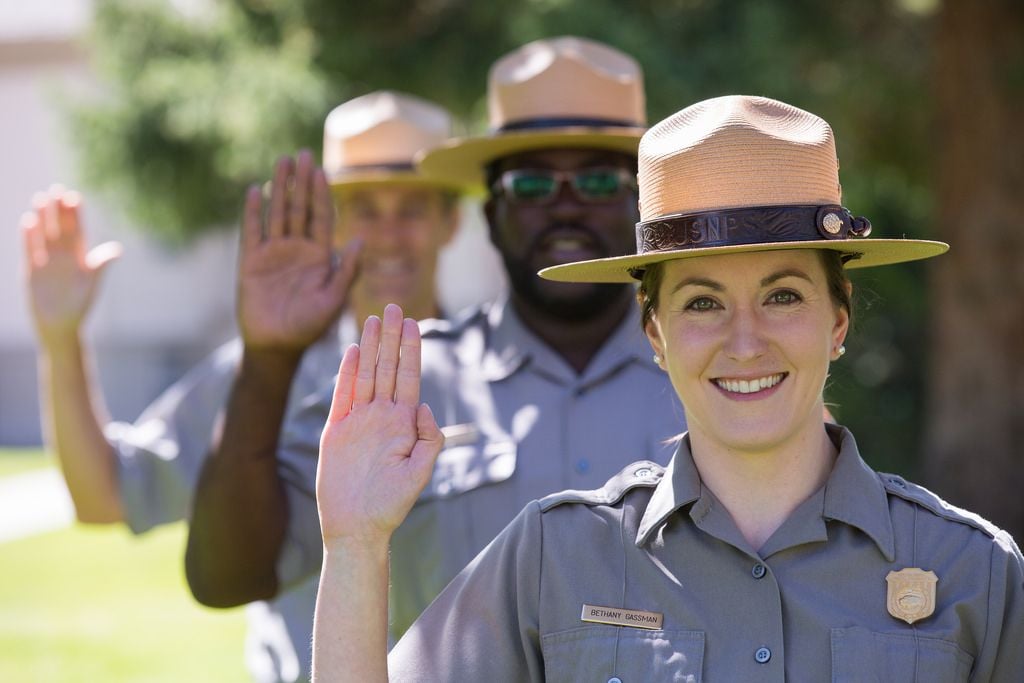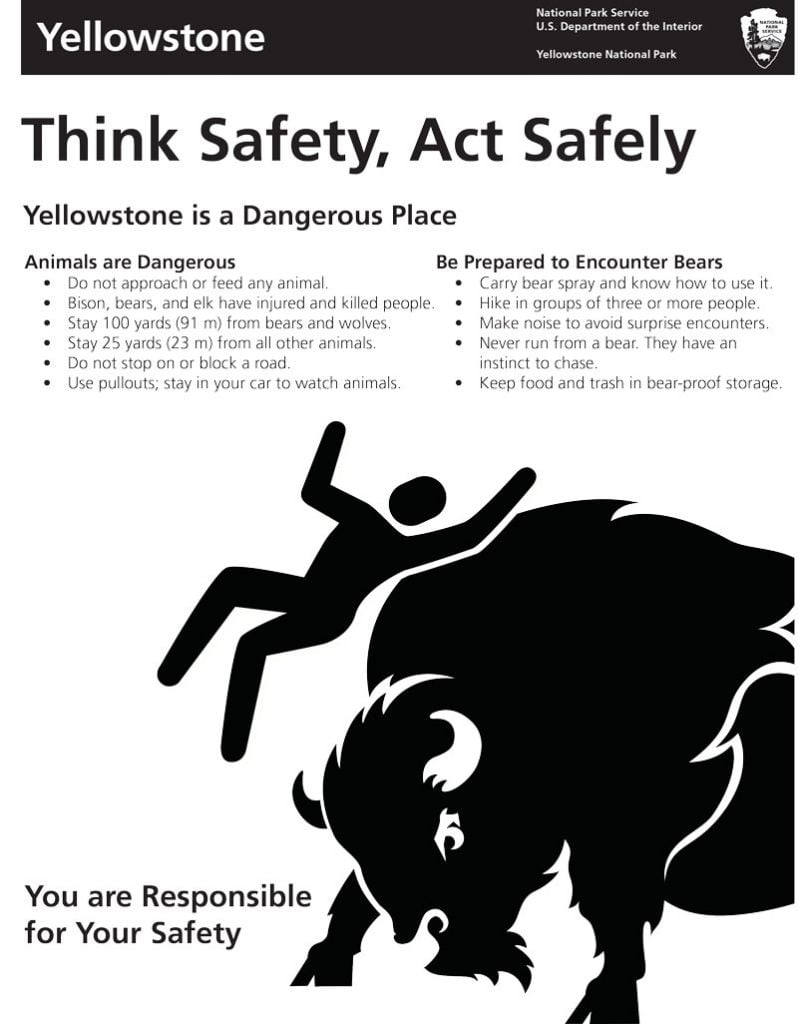Q&A with a Yellowstone Ranger
Law Enforcement in Yellowstone
In her three decades as a Yellowstone National Park ranger, Tara Ross has seen her share of natural wonders. She’s witnessed some unnatural wonders, too. Like the time she happened upon visitors attempting to cook a chicken in a geyser basin.
The District Ranger, who oversees law enforcement in one of the park’s seven districts, sat down for a chat and provided a glimpse into her world.

Q: Casual visitors might not know there are different kinds of National Park Service rangers. What’s the difference?
A: Interpretive rangers are what most people think of when they think of a ranger. Law enforcement rangers provide emergency services, responding to motor vehicle crashes and emergency medical situations. Visually, what’s distinguishable are our badges. But anyone who looks official is going to get questions.
Q: Like what?
A: Well, on the road, it’s mostly people asking for directions. It’s interesting when you’re at a (traffic) incident and someone comes up holding out a map. Would they do that to the highway patrol?
Q: I guess some people feel as if they’re in a protected bubble when they visit a national park — sort of like going to Disneyland.
A: Yellowstone is the American safari. Some people think they’re safe from the animals.

Q: Despite notices everywhere spelling out potential dangers?
A: Social media has had an impact. People post risky behavior on Facebook and make it seem acceptable. Like diving off cliffs at Firehole with a GoPro. Or petting a bison.
Q: Would a bison put up with that?
A: Maybe. Sometimes bison are just going where they’re going. But online you’ll see lots of videos of bison charging people. Or you’ll see a video of people at the Grand Prismatic, one of the most iconic and fragile springs, trampling off the boardwalk. Sometimes that’s how we catch people.
Q: You can nab them retroactively?
A: Yes. We’ve got the proof. It’s online.
Q: Yellowstone can be a bustling place, but I’ve heard if you’re willing to walk a mile or so, you can find solitude.
A: It depends on where you are. But it might be more than a mile these days. Around Old Faithful, it’s like a superhighway. The only thing preventing overuse (in the backcountry) is that campsites are spaced a half mile apart.
Q: What’s the most common medical emergency you deal with?
A: Heart attacks. And strokes because of the high altitude.
Q: Backups due to animal sightings will always be a fact of life in Yellowstone. What’s the name for these kinds of traffic delays?
A: Bear jam. Bison jam. Moose jam. There are even eagle jams. It just takes one animal.
Q: Well, the park service seems to get a ranger out quickly to handle the animal jams. How do you do it?
A: Everyone has a radio, from the maintenance people to the resource management people.
Q: Do you ever want to ask someone, “What were you thinking?!”
A: I wish we could write tickets for that. The violation would be, What Were You Thinking?
Q: Give me an example.
A: I ran across some people in the middle of a geyser basin cooking a whole chicken. There’s supposedly arsenic in that water. I wrote them a ticket. They said they’d seen a photo from back in the day – the 1920s, maybe – where someone caught a fish near West Thumb Geyser Basin and cooked it in a hot pot (thermal spring).
Q: That’s funny, but there have been a number of tragedies resulting from visitors straying off designated paths.
A: Last year, a brother and sister went to Norris Geyser Basin looking for hot springs. The pool had a slope to it and he slipped. The ground is so fragile there, the park staff couldn’t even get to the spot to determine if it was solid.
Q: That’s so sad. The story got a lot of play. Do you think it’s a cautionary tale that will deter future hot springs seekers?
A: It’s hard to say.
Q: What’s the one piece of advice you’d give Yellowstone visitors?
A: Read the newspaper they pass out at the gate. It lists all the regulations.
Tara Ross currently produces a podcast, “Crime off the Grid” which explores true crime stories from our national parks and other wild places. Each episode features stories from rangers, investigators, prosecutors, and victim specialists dedicated to justice in wild places. The podcast aims to raise awareness about the realities and dangers of these environments and offer safety tips for travelers.
If you’d like more information on the history of the park ranger profession, visit the Museum of the National Park Ranger at the Norris Campground. If you are interested in learning more about the role of the National Park Service in Yellowstone check out their #WhatWeDoWednesdays campaign. In 2019, they began highlighting the diversity of work done by Yellowstone employees. From studying archaeological sites, to maintaining boardwalks, to predicting the next Old Faithful eruption, there are many types of positions that help preserve the park’s natural and cultural resources for the enjoyment, education, and inspiration of this and future generations. Check out their website for behind the scenes details on these jobs.
Washington, DC-based freelance writer Jayne Clark has been a travel reporter at USA TODAY and several other daily newspapers.
For more travel experiences to Beautiful Places on Earth™ available from Xanterra Travel Collection® and its affiliated properties, visit xanterra.com/explore.
Want to experience Yellowstone in depth? See what makes Yellowstone National Park a great place to work for a season or longer!
Photo Credits: Video, Rangers, and Safety Poster are provided by the NPS.
Related Stories
- Related Stories